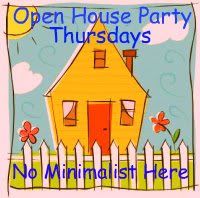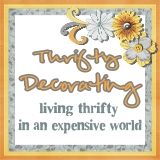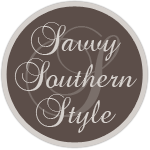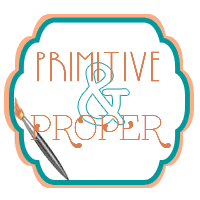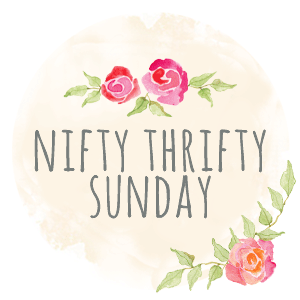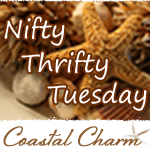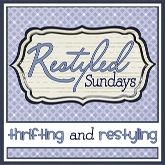I found this great library table at a flea market. I knew when I bought it that I wanted to stencil a design on the top.
So I gave it two coats of CeCe Caldwell's Antique White. I decided to cut a stencil with my Silhouette Cameo and had heard others talk about using contact paper instead of the expensive stencil vinyl so I decided to try it. Cutting and applying the stencil in sections is tedious work, but I knew it would be worth it. I taped off a border with blue painter's tape so I didn't have to worry about the stencil going to the edge.
Then I mixed a little white latex paint with CeCe Caldwell's Carolina Sun Yellow to tone it down some and painted the stenciled areas. The best part is always pulling the stencil off to reveal the final product. Here's what it looked like when I pulled the stencil off:
Beautiful, right? ARG! At first I thought it was because I used contact paper instead of stencil vinyl. I was cursing that decision! Then I realized that the painter's tape also pulled paint off. I've now concluded that it must be a characteristic of the CeCe Caldwell paint. I've stenciled this Harlequin Table and this Moroccan Lattice Table using Annie Sloan Chalk Paint, painter's tape, and stencil vinyl. I had no problem with them.
Lesson #1: If you're going to stencil using an adhesive, don't use CeCe Caldwell paint. It's great for lots of applications, but this isn't one of them.
I also discovered that the contact paper left a sticky residue all over the table top. I usually use Goo Gone to remove sticky tape residue so I thought I'd try it on the table. I squirted some on a rag and rubbed a small spot. It took the sticky off, but left a greasy spot! UGH!
Lesson #2: Don't use contact paper for a stencil unless you're willing to deal with the stickiness. Also, contact paper isn't see through and makes it tough to match up the design.
Lesson #3: Don't use Goo Gone on painted surfaces.
So what's a girl to do??? Well, I grabbed a small brush and proceeded to touch up all of the places that were missing paint. I knew that CeCe's paint would paint over wax so I tried it on the oily spot. That did the trick! Again, tedious work. But it looked ok when I was done.
I loved the way it turned out, but the white was too stark. I also still had a sticky table top. I decided to wax the top and see if it would somehow cover or dissolve the stickiness. I gave it a coat of clear wax and that did the trick! I contemplated using a glaze. I worried that if I used a glaze on the table top it would accentuate the places that had lost paint. I thought it would look funny if I used it everywhere but the table top. I ended up with a compromise.
I grabbed a small craft brush and applied Howard's Golden Oak wax to the rope detail and crevices on the legs, then wiped it off. It was enough color to emphasize the details, but not so much to make the piece look disjointed.
FINALLY! The table was done!
This is exactly what I envisioned when I started. I just didn't know it would take hours to get here!
I took it into the shop yesterday and got my display set up.
I know I'm not making any money on this table after the number of hours I poured into it. But I've ended up with a beautiful table and if you've learned anything from my mistakes, it's all worth it!


Sharing this week's journey with these friends:



